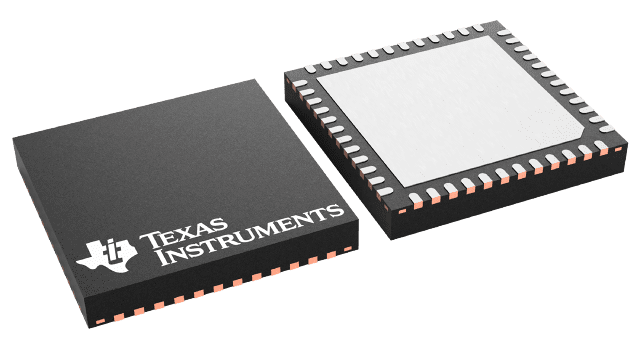Información de empaque
| Encapsulado | Pines VQFN (RGZ) | 48 |
| Rango de temperatura de funcionamiento (℃) -40 to 85 |
| Cant. de paquetes | Empresa de transporte 1,000 | LARGE T&R |
Características para LMX8410L
- Wideband RF Input: 4 to 10 GHz
- Large IF Bandwidth: DC to 1350 MHz
- Input IP3: 28 dBm at 5-GHz RF Input
- Noise Figure: 15 dB at 5-GHz RF Input
- High Voltage Conversion Gain: 11 dB at 5-GHz RF Input
- Integrated Wideband RF Input Balun
- Automatic Offline DC Offset Correction to ±2 mV
- Programmable IMRR Calibration
- SYNC Feature for Multiple Devices
- High-Performance Integrated LO Synthesizer: 56.5-dBc DSB Integrated Noise at 5-GHz carrier
- External LO mode: Integrated LO Synthesizer can be Bypassed; Support External LO Injection
- Integrated Low-Noise LDOs
- 7-mm × 7-mm 48-pin QFN Package
Descripción de LMX8410L
The LMX8410L is a high-performance wideband (RF frequency input from 4 to 10 GHz) I/Q demodulator with an integrated LO and IF amplifier. With IIP3 of 28 dBm and NF of 15 dB (both at 5GHz), it provides excellent dynamic range for high performance applications. The device offers large complex bandwidth of 2.7 GHz for high data-rate applications.
The LMX8410L offers an automatic DC offset correction algorithm that reduces the offset to less than ±2 mV. Fine control of gain and phase of I and Q channels is enabled using SPI interface to achieve high image rejection.
The LMX8410L has a high level of integration providing high performance while saving board space and complexity. It integrates a wideband RF input balun, eliminating the need for external baluns. It integrates a high-performance PLL and VCO, eliminating the need for external LO and LO driver. The device also integrates an IF amplifier and several low noise LDOs, further simplifying the board.
The LMX8410L integrates a very low-noise synthesizer, with a PLL FOM of –236 dBc/Hz, providing up to 56.5-dBc DSB integrated noise at 5 GHz carrier. The LO allows for phase synchronization across multiple devices. The high-performance synthesizer output can be brought out to drive another stage or a data converter. The integrated LO can be bypassed for applications that share a common external LO.
